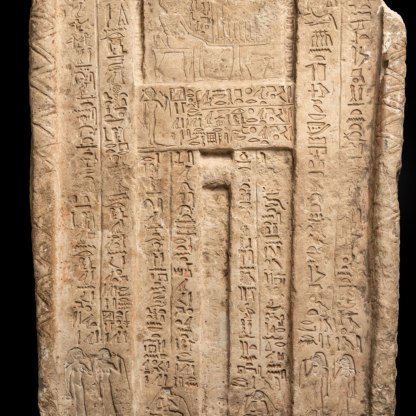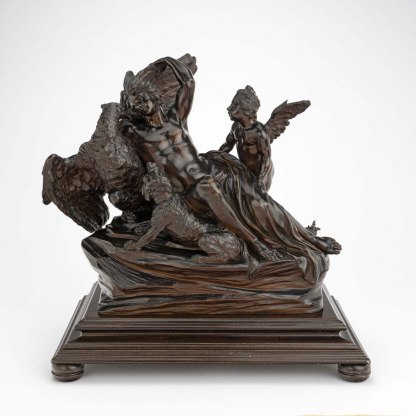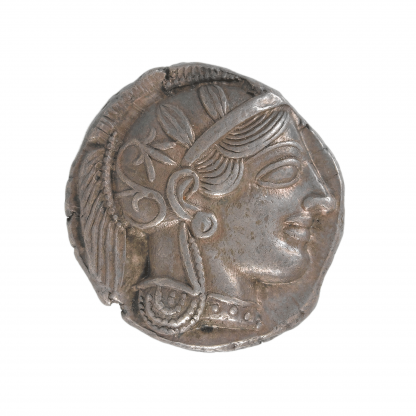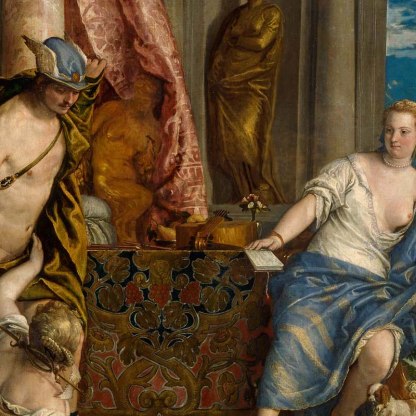Leda's Children
There is a story that Jupiter flew to my mother Leda in the shape of a swan.
Euripides, Helen, ll. 17–18 (412 BCE)
Although it was a popular subject in the visual arts, no substantial literary account of the coupling of Leda with the swan survives from antiquity. The children born of the union, however, were to feature largely in pre-Christian literature and beyond.
Leda laid an egg, or maybe two eggs, from which were hatched Helen, the twin heroes Castor and Polydeuces and another daughter, Clytemnestra. Some sources say that Helen and Polydeuces were the children produced from Jupiter's seed, while Castor and Clytemnestra were the natural children of Leda's mortal husband, Tyndareus, who slept with her on the same night. In the second century CE, the Greek travel writer Pausanias saw an egg that was purported to be that laid by Leda, revered and suspended by ribbons from the ceiling of a temple in the Peloponnese.
Of Leda's offspring, Helen is the most infamous. Growing up in Sparta with her mortal parents, she was outstanding for her physical beauty. Wooed by many, she eventually married Menelaus who became king of Sparta on the death of Tyndareus. She was abducted, however, by the Trojan prince Paris and taken to Troy, Paris' reward from Aphrodite for judging her the most beautiful of the goddesses. This abduction led to the Trojan war, a ten-year-long bloodbath during which the Greeks tried to recapture Helen and avenge Menelaus. A sketch by the nineteenth-century artist Edward Burne-Jones 1547, shows Paris persuading Helen to leave with him for Troy.
Greek literary tradition is ambivalent in its attitude to Helen. In Homer's Iliad, she is a serious and sympathetic figure who realises with regret all the trouble that her beauty has caused. Other works are more hostile, presenting her as a fickle, flighty creature, unworthy of the heroic blood shed on her behalf. In a bizarre version of the myth, that used by Euripides in the play quoted above, the real Helen never went to Troy at all, but was replaced by a phantom, while she herself was spirited off to safety in the court of King Proteus of Egypt.
Helen's sister Clytemnestra played a bloody role in the aftermath of the Trojan War. She was married to Agamemnon, Menelaus' brother and the leader of the Greek army at Troy. On his victorious return home, Clytemnestra murdered Agamemnon, in vengeance for his sacrifice of their child Iphigenia. Clytemnestra was in turn killed by her other children from Agamemnon, Orestes and Electra. Left is a print by the Cambridge artist Gwen Raverat (1885–1957) showing the queen standing, axe in hand, above the corpse of her husband P.768-1974. It is based upon a scene from a play by the fifth-century BCE tragedian Aeschylus.
Castor and Polydeuces are the more straightforwardly heroic of these four siblings. They were known as great horsemen and revered as paragons of brotherly love. Collectively they were referred to as the Dioscuri - literally 'the sons of Jupiter'. So devoted to each other were they that when Castor, son of the mortal Tyndareus, was killed in battle, Polydeuces offered to share his own immortality. Each spent half the year in the Underworld while the other enjoyed life with the gods on Mount Olympus. Jupiter honoured them by creating the constellation Gemini, 'the twins'.
Proud of the brood that Leda bore him, and to commemorate the bird whose form he had taken, Jupiter created the constellation Cygnus – the swan.
Other highlight objects you might like
Other pathways and stories you might like
Sign up to our emails
Be the first to hear about our news, exhibitions, events and more…






